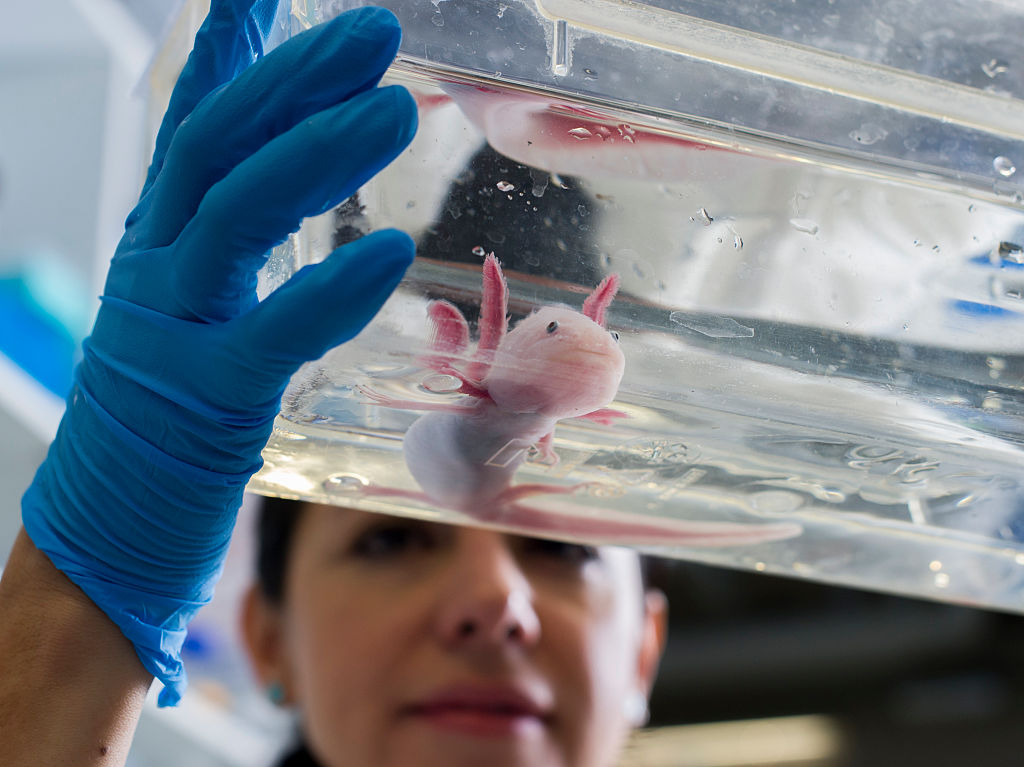Axolotls Life Span: Are These Giant Salamanders That Can Regenerate Body Parts Going Extinct? - Nature World News

Legend has it that axolotl is the Aztec god of fire and lightning, Xolotl, which disguised himself as a salamander to avoid being sacrificed so the sun and moon could move in the sky.
These subjectively cute and adorable salamanders have quite fascinating ability, sought after by scientists for their powers of regeneration. Making itself more known after having an appearance in computer games Minecraft and Fortnite, axolotls have become increasingly popular as pets as well. Along with pollution and urbanization, these amphibians endemic to Mexico are now going instinct, LiveScience reports.
It was also reported that axolotls which commonly killed for food by the Aztecs back in the day, are still eaten in Mexico today.
Beyond that, axolotls have become one of the world's most famous salamanders with extraordinary ability to regenerate body parts, according to BBC Wildlife.
Axolotls' Lifespan
Axolotls (Ambystoma mexicanum) are amphibians from Mexico, native to an increasingly small number of channels and lakes. There are more than 30 salamander species in the Ambystoma genus, known as the mole salamanders, according to the University of California, Berkeley's, AmphibiaWeb.
As surviving species belonging to the single living genus of the family Ambystomatidae, the salamanders live an average of 5 to 6 years in captivity, but some have lived for up to 17 years, as per University of Liverpool's The Animal Ageing and Longevity Database.
Historically, these carnivores are at the top of the food chain, preying on anything they can snatch such as mollusks, fish and arthropods like insects and spiders, and even devour each other. Having gone through courtship once a year, it takes about a year for axolotls to become sexually mature. American evolutionary biologist Stephen Jay Gould described adult salamanders as "sexually mature tadpoles" for having retain their juvenile characteristics throughout their lifetime - an evolutionary phenomenon of "everlasting youth" called paedomorphosis, or neoteny.
Also read: California Experiences Jumping Worms Apocalypse
Why are axolotls going extinct?
Axolotls are now considered critically endangered by IUCN Red List of Threatened Species. 1998 and 2008 surveys found that the population density had dropped from about 6,000 individuals per square kilometer (0.4 square miles) to 100 individuals per square kilometer, while about 35 individuals per square kilometer were gone in a more recent survey in 2015.
Pollution and poor waste regulations are among the particularly detrimental culprits, driven by increasing tourism in Mexico City. Plastic wastes, heavy metals and high levels of ammonia spilled from waste-treatment plants clog the canals where the salamanders live. Consequently, the species also suffer from high rates of inbreeding.
Mexican government, scientists, farmers and even nonprofit organizations are working on how the salamander's habitat may be restored. Several organizations are also promoting conservation efforts by providing opportunities for interested tourists to see the salamanders in their natural habitats.
The salamander's regenerative ability has contributed greatly to regenerative research, including the oddity found in axolotls' genomes. While their organs and tissues are far more complicated than humans, findings provide potential regenerative therapies for humans and other medical applications.
Related article: Wing Virus Has Potential To Wipe Out Honeybee Populations Worldwide
© 2022 NatureWorldNews.com All rights reserved. Do not reproduce without permission.
Comments
Post a Comment